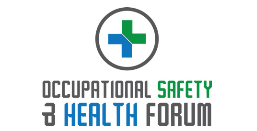Ensuring the health and safety of employees is both a legal and moral responsibility for UK businesses. A robust Risk Management Assessment (RMA) for health and safety can prevent accidents, foster a positive workplace culture, and save the organisation from potential legal complications. Here are the pivotal considerations when undertaking this critical task…
- Scope and Purpose: Begin by defining the scope of the assessment. Whether it’s for a specific department, a particular activity, or the entire organisation, clear delineation helps in ensuring comprehensive coverage.
- Identification of Hazards:
- Physical Hazards: Include machinery, equipment, substances, or environmental factors that could cause harm.
- Ergonomic Hazards: Focus on work areas, furniture, and task design that might lead to musculoskeletal disorders.
- Biological Hazards: These encompass bacteria, viruses, and other organisms that might cause illnesses.
- Psychosocial Hazards: Factors that might affect the mental well-being of employees, such as workload, bullying, or organisational culture.
- Risk Analysis: For each identified hazard, evaluate:
- Severity: The potential consequences if the hazard leads to an accident or illness.
- Likelihood: The probability of the hazard resulting in harm.
- Employee Involvement: Engage employees in the assessment process, as they offer a ground-level perspective. Their direct interaction with potential hazards provides invaluable insights.
- Control and Prevention Measures:
- Elimination: Can the hazard be completely removed?
- Substitution: Replace a dangerous procedure or substance with a safer alternative.
- Isolation: Separate the hazard from people, through barriers or specialised rooms.
- Administrative Controls: Implement safe work practices, training, or shift rotations to reduce exposure.
- Personal Protective Equipment (PPE): Ensure PPE is available, suitable, and used correctly where needed.
- Regulatory Compliance: In the UK, the Health and Safety Executive (HSE) provides guidelines and requirements, such as the Health and Safety at Work Act 1974. Ensure your RMA aligns with these regulations to avoid legal ramifications.
- Documentation: Record every step of the assessment, from identified hazards to implemented controls. This not only provides evidence of compliance but also serves as a reference for future evaluations.
- Review and Update: Regularly revisit the RMA, especially after significant changes in processes, introduction of new equipment, or after any incident. Continuous reviews ensure ongoing safety and evolving risk mitigation.
- Training and Awareness: Conduct regular training sessions to keep staff updated on safety protocols, and promote a culture where health and safety are ingrained values.
- External Expertise: Consider hiring or consulting with health and safety professionals. Their expertise can bring to light overlooked hazards and suggest effective control measures.
A Health & Safety Risk Management Assessment is an ongoing commitment that evolves with the business environment. For companies, prioritising this assessment not only safeguards employees but also strengthens the business’s reputation, productivity, and bottom line.
Are you planning Risk Management Assessments for your organisation? The Occupational Safety & Health Forum can help!
Image by Mohamed Hassan from Pixabay







